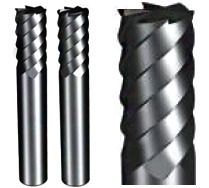Design for Manufacturing: Interrupted Cut Machining
What is interrupted cut machining? How can you do it without breaking cutters? This article covers the general recommendation to avoid interrupted cut machining operations. This extends cutter life and allows for an overall faster cutting operation.
Interrupted cut machining is any machining operation where the cutter blade is not in constant contact with the workpiece. This results in greater degradation of the cutter blade. The cutter degradation rate is accelerated due to the thermal cyclical stresses undergone by the cutter blade due to the quasi-intermittent operation of the machine.

In addition to the damage due to thermal stresses, cutters in interrupted cut machining operations also undergo a process known as strain hardening due to the repeated impacts on the workpiece as it is moved through the interrupted cut sequence. This strain hardening results in dislocations in the material lattice structure, which cause the cutter to be more likely to fracture during the machining sequence.
Reduced cutter life is not the only disadvantage of interrupted cut machining operations. Interrupted cut machining operations often prevent using faster speed ceramic or carbide cutter blades. This results in a slower workflow as a lower machining speed is required.
If
(a) While designing machined parts:
Then
(a) Avoid the use of interrupted cut operations
(b) Preferentially design for single-point machining
(c) If single-point machining is possible, consider the use of carbide or ceramic cutters
The use of this rule will extend cutter life and shorten the length of machining operations. This will result in a lower overall processing time and cost associated with producing the desired end product.





Member discussion